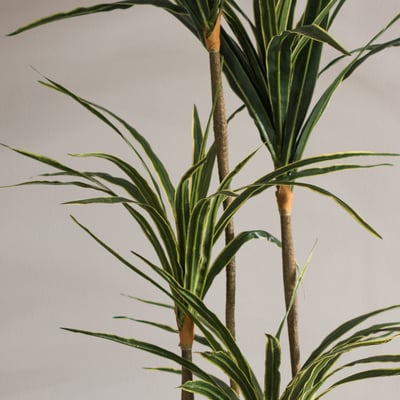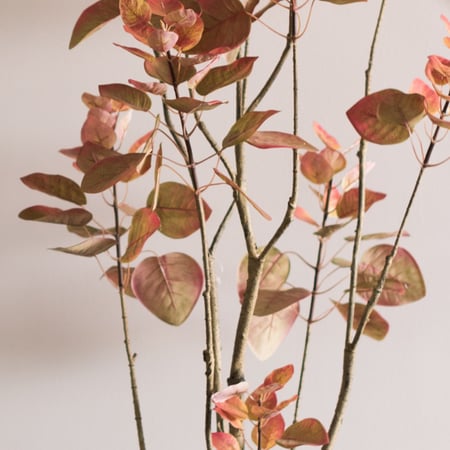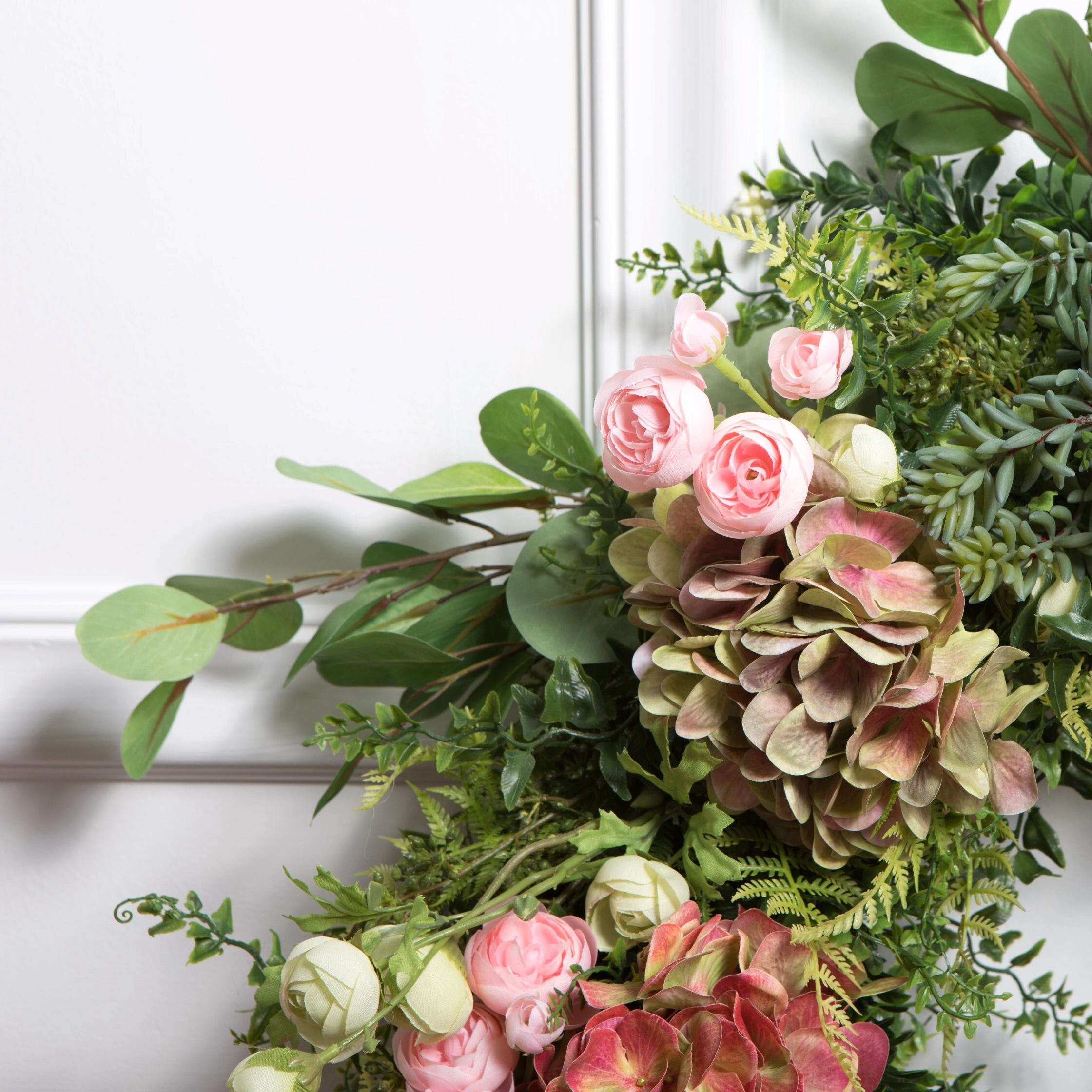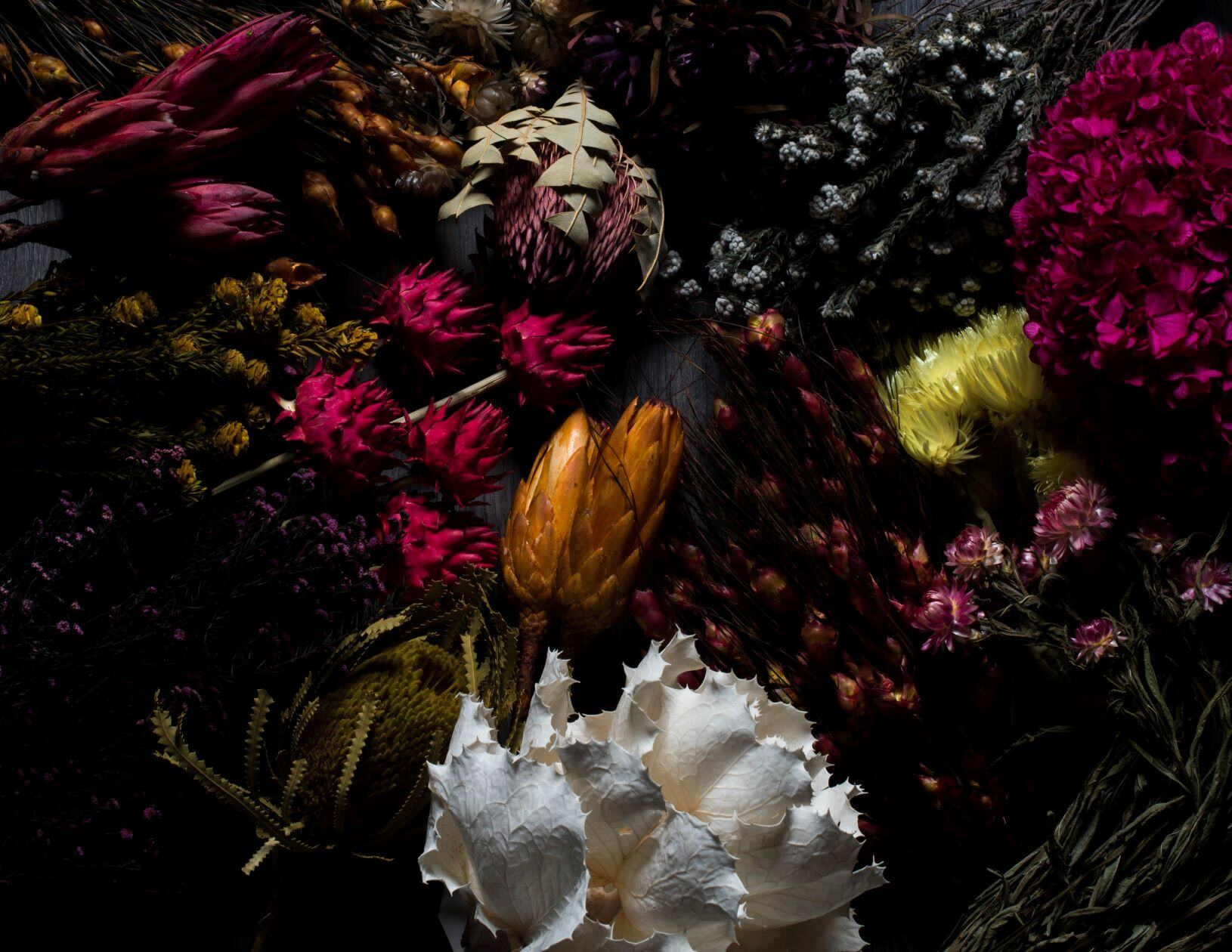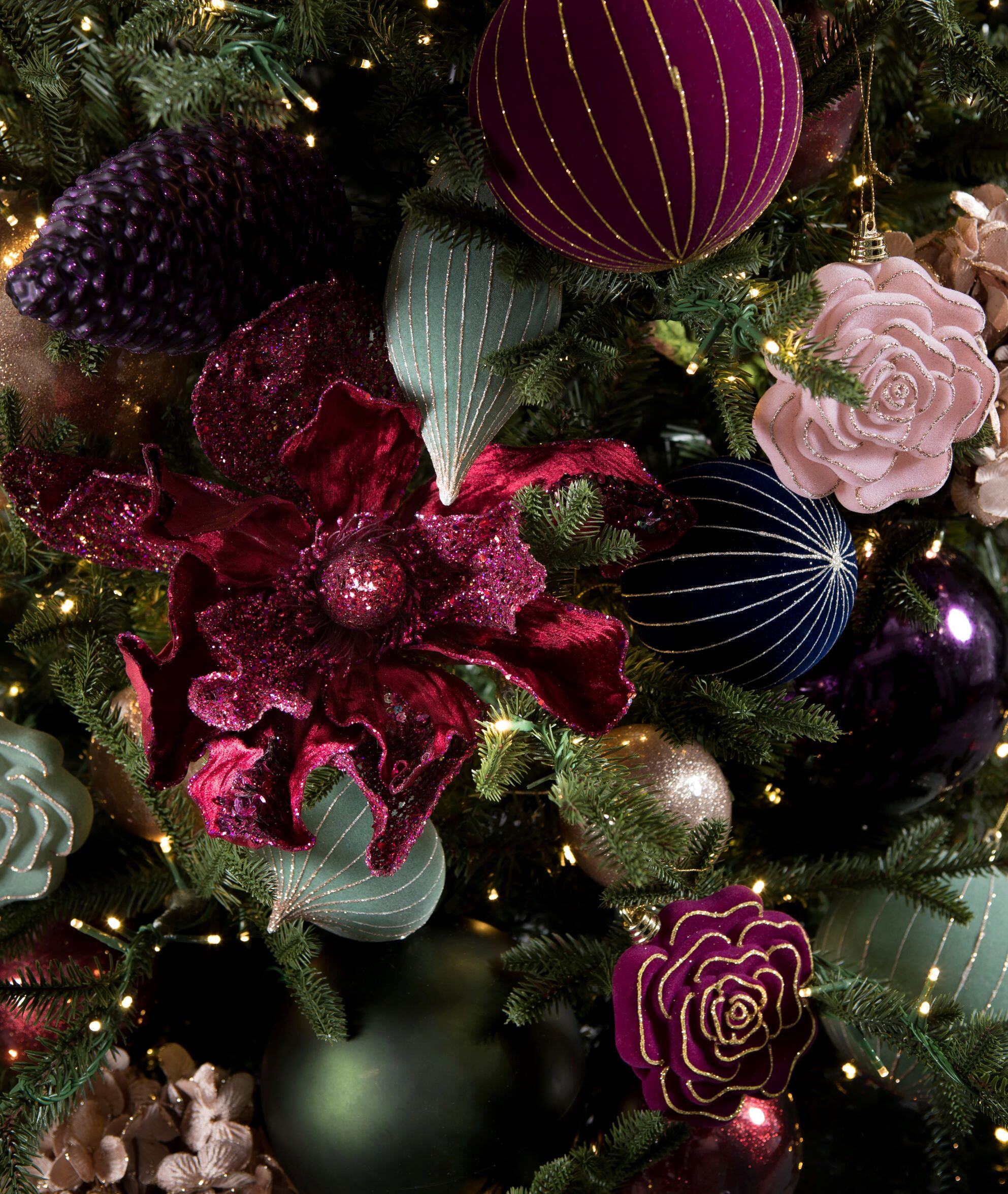As a professional designer or decorator, you've likely seen your fair share of unrealistic faux plants — which means you've also seen how lifelike artificial foliage options can be today.
From lush houseplants to cascading outdoor greenery, artificial plants are low-maintenance additions to any installation. Read up on our best tips for incorporating faux plants and florals flawlessly into your next client project or installation.
1. Focus on Realistic Textures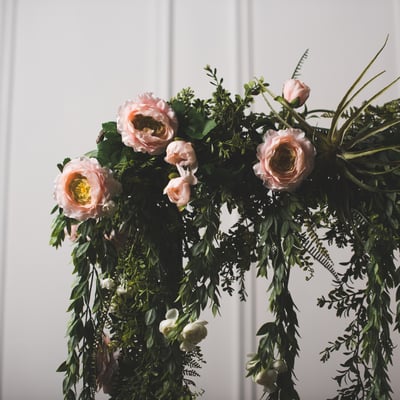
When selecting artificial plants, it's most important to source premium materials that mimic nature's intricacies. The best artificial plants use multiple types of silicone, latex, plastic, and fabric to build dimension. Rubberized leaves capture softness, while plastic stamens provide structure.
Think about mixing media to elevate realism and incorporate air plants, dried pods, twigs, lichen, and other organic accents. This can elevate basic silk stems, or allow you to repurpose them later. And those branches that defy perfection? Use floral wire to craft customized branches to get the exact look you're going for.
Achieve the Right Sheen
You'll want a variety of sheens when it comes to artificial plants. If you're not finding exactly what you're looking for, there are ways to customize your products to achieve your desired, natural look.
Apply antiquing washes to dull synthetic sheen. Mist with watered-down acrylic paint or dust with powdered chalk to impart matte, aged finishes. Let subtle tones and imperfections emerge. Age metallic floral picks using acid solutions.
2. Consider Light Exposure
When styling faux plants and trees, think about where living varieties would thrive in the room (and arrange accordingly). For example, you'll want to position faux potted palms or succulents by bright sunny windows; meanwhile, silk ivy works well on sheltered bookshelves to enhance realism.
For the outdoors, place pieces logically in the landscape. Blooms will look like thriving arrangements when placed in a sunny spot, whereas a simple ornamental shrub can liven up a shady space.
3. Coordinate Containers and Planters
While some artificial plants come ready to install in containers, upgrading generic pots elevates the style exponentially.

Metallic pots and vases elevate tropical fronds, while hand-thrown ceramics complement flowering orchids. Incorporate regionally made textural baskets for an organic look. You may choose to mix textured containers like rattans or glossy ceramics and use proportions suiting the plant. Add extra height with decorative stands for bushy ficus or trailing vines.
Use the same principles you'd use for real floral arrangements
When filling a vase or planter with faux plants, train your eye to arrange your artificial plants asymmetrically and at varied depths, just as you would a living arrangement. Consider leaf vein patterns, stem pliability, and bloom variations for utmost realism. Marry this with containers and planters sourced from local artisans to create bespoke vignettes.
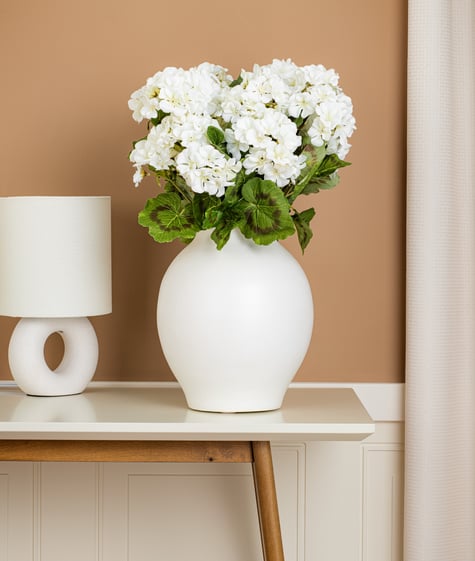 When assembling, follow the same rules you would if you were working with live florals:
When assembling, follow the same rules you would if you were working with live florals:
1. Find the right vase or vessel. Rule of thumb: Your vase should be about one-third the height of the finished arrangement.
2. Insert a foam block into your vase and anchor it to the bottom of the vessel.
3. Start with your greenery base. Remember to cut and remove any leaves that are below the vase's lip line. Insert the wire ends of your greenery into your foam block.
4. Place prominent faux florals like magnolias or peonies at varying levels and facing different directions to establish depth. Support heavy blooms with floral picks or pipe cleaners. Bend the wires of your flowers to achieve a realistic look.
5. Fill in the gaps with filler flowers that add pops of color or whimsy. This is also a good time to add a few small unique blooms to complement your statement flowers.
6. Finish by filling in the remaining gaps with lush greens and sprigs.
7. Check for balance — is one side heavier with color than the other? Is there enough dimension? Rule of thumb: The tallest blooms should be 1.5-2 times the height of the vase.
8. Use floral adhesive to bind loose pieces and conceal any visible mechanics. This also prevents dust buildup.
4. Guard Against Dust Buildup
Because faux foliage can quickly lose its luster, it's important to educate clients on caring for faux plants to retain their realistic details.
As a value-add to your services, consider curating specialized dusting kits to provide clients, containing microfiber cloths, extendable brushes, blower bulbs, and acrylic sealants. Include laminated usage instructions and schedule reminders. Up-selling these kits incentivizes follow-through on proper cleaning.
Proactively treat delicate materials
Protect delicate silk or fabric leaves by applying a clear acrylic spray sealant, which acts as a shield against settling dust. Apply spray evenly across all surfaces, allowing to dry completely between coats. Reapply the protective coating every 12-18 months to maintain effectiveness.
5. Style Artificial Plants Across Seasons
Faux plants retain their flourish indefinitely, allowing creative styling from season to season. Transition indoor mums and orchids outdoors for covered patio containers in colder months, then swap for abundant ferns poolside in summer.
Embrace transitional blended displays
Layer faux elements within living plant installations to ease between seasons elegantly. Intermix permanent branches, stems, and topiaries to refresh living displays in spring, retain a base going into dormant months, then enliven again with renewed annuals.
Quality faux pieces serve as neutral placeholders for ready-to-rotate layers of seasonal color and texture. This blended approach is budget-friendly, reduces waste, and delivers stunning visual continuity.
Coordinate exterior to interior botanical style
Experienced designers understand the power of botanical style to transport clients from outdoors in. Intuitively share elements like plant varieties, textures, and color palettes inside and out. But go further by considering architectural vernaculars and client lifestyles to transport clients through a seamless, personalized experience from the front yard through each room of their home.
6. Incorporate Faux Florals Into Tablescapes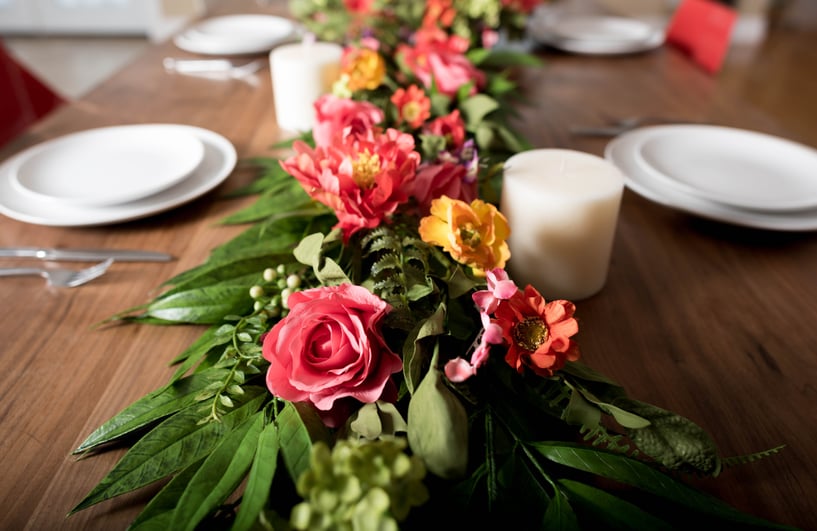
You can easily reuse faux vines, eucalyptus sprays, or exotic protea stems to thread through table garlands — no re-purchasing required. For events, echo the style of any perishable florals using coordinated faux accents. Permanent stems, vines, and foliage can transition easily between upscale table décor installations, reducing the need for single-use arrangements.
Start by curating a core collection (or a "botanical library") of quality artificial greenery in a signature color palette. These flexible bases work seamlessly into runners, garlands, and more. Then supplement with striking focal flowers with unique textures, dramatic blooms, or sculptural shapes — or, build off the existing, natural florals being used for the event.
To pull your table together, you can even extend the theme with textural chargers, napkin rings, and place cards.
It All Comes Down to High-End Materials
Don't settle for big box store plants that will rapidly show wear. Premium quality fabrics like silk and rubberized leaves capture a graceful, dimensional look, and the subtle sheen and movement they offer sells realism.
When you invest in durable silk flowers and rubberized foliage that mimics nature's imperfections, you're setting yourself up to impress your clients. (In some cases, they might even ask if they need to water the products you introduce to their home or display.)
At Vickerman, we've been perfecting realistic foliage for decades. We know what goes into a realistic floral or plant display, and we make it easy to get products that will withstand the test of time.
Curious what we can add to your collection? Take a look through our warehouse:
